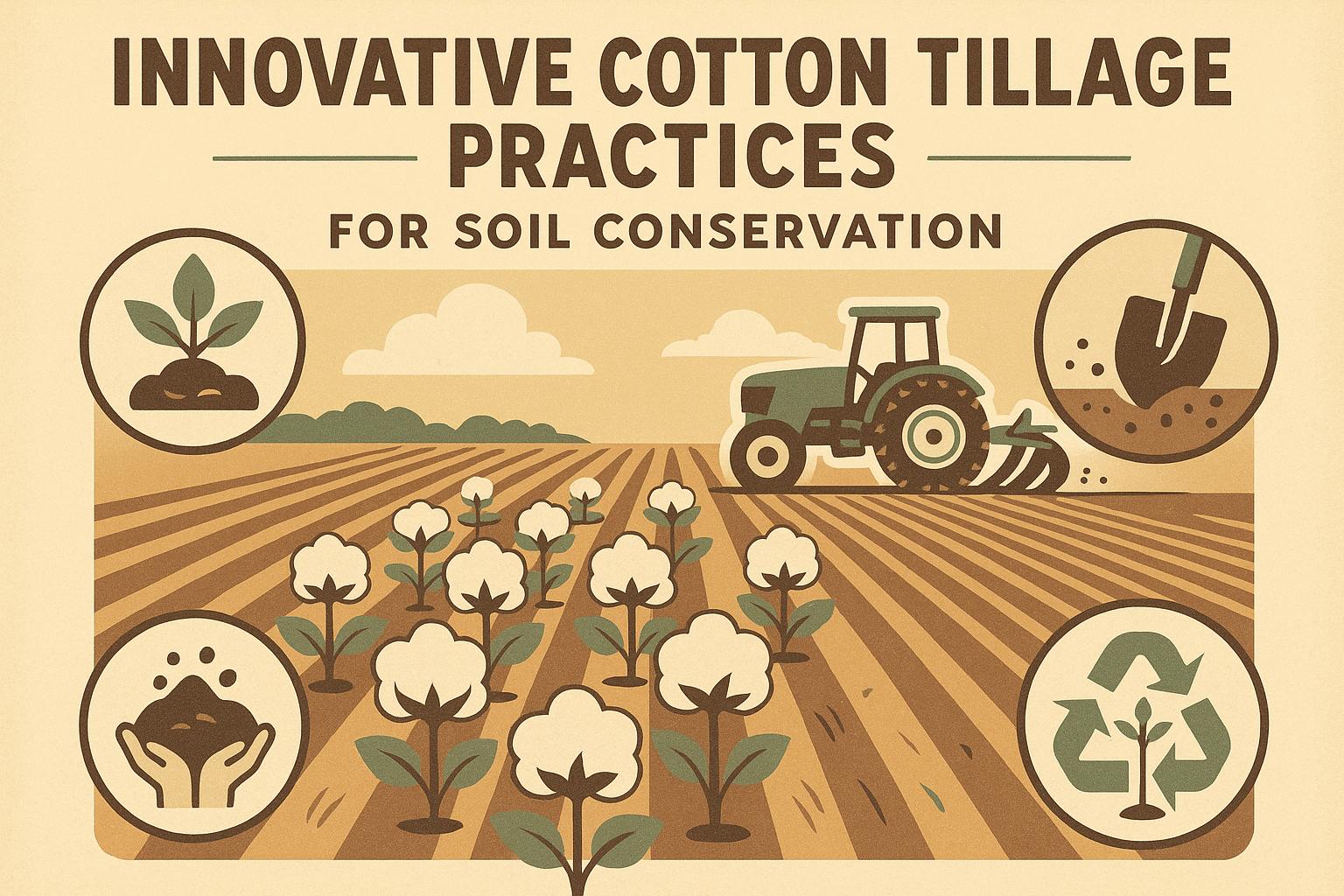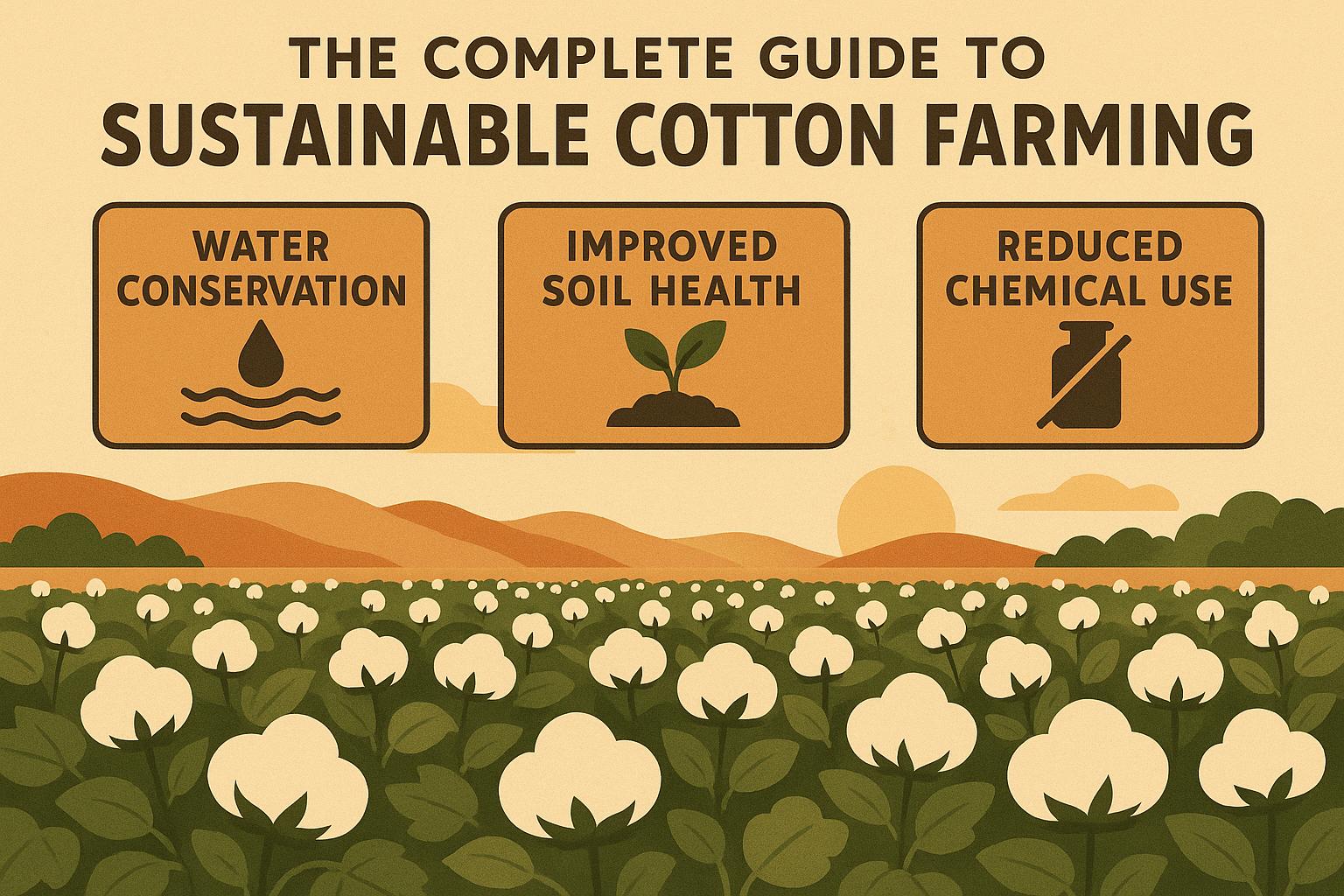Diseases pose a constant threat to cotton production, capable of slashing yields by up to 50% or more if left unmanaged. From seedling damping-off to boll rots, these issues not only reduce fiber quantity and quality but also increase input costs and environmental impacts through excessive chemical use. Effective disease management relies on a proactive, integrated approach that combines cultural practices, resistant varieties, and targeted interventions to foster healthy crops. This comprehensive guide outlines key strategies for identifying, preventing, and controlling common cotton diseases, empowering growers to safeguard their fields and optimize profitability. By prioritizing soil health, vigilant monitoring, and sustainable tactics, farmers can minimize losses and build resilient systems that support long-term productivity across diverse growing regions.
Understanding Common Cotton Diseases and Their Impacts
Cotton crops are susceptible to a range of fungal, bacterial, viral, and nematode-induced diseases, each with distinct symptoms and triggers. Environmental factors like excessive moisture, poor soil drainage, or nutrient imbalances often exacerbate outbreaks, while pathogens can overwinter in crop residues or spread via contaminated seed. Recognizing these early is crucial, as many diseases progress rapidly during warm, humid conditions typical in cotton-growing areas.
Here's a table summarizing major cotton diseases, their symptoms, primary causes, and potential yield impacts:
| Disease | Symptoms | Primary Cause | Yield Impact Potential |
|---|---|---|---|
| Bacterial Blight | Water-soaked lesions on leaves, angular spots, boll rot | Bacterial pathogen (Xanthomonas) | Up to 30-40% loss in severe cases |
| Fusarium Wilt | Yellowing and wilting of lower leaves, vascular discoloration | Soilborne fungus (Fusarium oxysporum) | 20-50% reduction, persistent in soil |
| Verticillium Wilt | Leaf yellowing, defoliation, stunted growth | Soilborne fungus (Verticillium dahliae) | 10-30% yield drop, worsens with stress |
| Target Spot | Circular lesions with concentric rings on leaves | Fungus (Corynespora cassiicola) | 15-25% defoliation leading to boll shed |
| Alternaria Leaf Spot | Small dark spots expanding to blights | Fungus (Alternaria spp.) | 10-20% in humid conditions |
| Seedling Diseases | Damping-off, root rot, poor emergence | Multiple fungi (Rhizoctonia, Pythium) | Up to 50% stand loss in cool, wet soils |
| Boll Rot | Soft, decayed bolls with mold | Various fungi and bacteria | 20-40% boll damage |
| Root-Knot Nematodes | Galls on roots, stunted plants | Nematodes (Meloidogyne spp.) | 15-30% overall yield decline |
| Cotton Leaf Curl | Leaf curling, vein thickening | Viral (transmitted by whiteflies) | Severe: 50%+ loss in affected regions |
These diseases vary by region—wilt issues dominate in heavier soils, while foliar spots thrive in high-humidity zones—but all undermine plant vigor, leading to reduced lint quality and market value. For instance, bacterial blight spreads through rain splash or irrigation, infecting bolls and causing premature opening, while wilts block vascular systems, starving plants of water and nutrients. Early-season seedling diseases are particularly devastating, as they thin stands and force replanting, emphasizing the need for preventive measures from the outset.
Prevention: Building a Strong Foundation Against Diseases
Prevention is the most cost-effective pillar of disease management, focusing on creating unfavorable conditions for pathogens before they take hold. Start with site selection and soil preparation: Choose well-drained fields with a history of low disease pressure, and test soil for pH (ideally 6.0-7.0) and nutrient levels to avoid imbalances that stress plants. Incorporate organic matter through cover crops or amendments to enhance soil structure and microbial activity, which naturally suppresses soilborne threats like fusarium.
Crop rotation is a cornerstone tactic, breaking pathogen cycles by alternating cotton with non-host crops like cereals, legumes, or sorghum for at least two to three years. This reduces nematode populations and wilt fungi buildup, potentially cutting incidence by 30-50%. Avoid continuous cotton planting, as it amplifies risks in infested soils. Additionally, manage irrigation wisely—use drip or furrow systems to minimize leaf wetness and overhead splashing, which spread foliar pathogens. Schedule water applications based on crop needs and weather, aiming to keep foliage dry during peak humidity periods.
Nutrition plays a vital role: Balanced fertilization, particularly with potassium, bolsters plant defenses against wilts and blights. Avoid excess nitrogen, which promotes lush growth conducive to fungal infections. Plant at optimal densities to improve airflow, reducing microclimates that favor diseases like target spot. Finally, sanitation is key—remove and destroy crop residues post-harvest to eliminate overwintering sites for pathogens. Plowing under debris or using controlled burns (where permitted) further disrupts disease cycles.
Identification and Scouting for Early Detection
Timely identification through regular scouting is essential to curb outbreaks before they escalate. Begin monitoring at emergence, walking fields in a systematic pattern (e.g., W or zigzag) to inspect representative areas. Examine plants for telltale signs: Yellowing or wilting may indicate vascular wilts, while lesions suggest foliar issues. Use tools like hand lenses for close inspection and submit suspicious samples to diagnostic labs for confirmation, especially for viruses or nematodes.
Establish economic thresholds—intervene when disease affects 5-10% of plants or shows rapid spread—to avoid unnecessary treatments. Digital apps and extension resources aid in symptom matching, while record-keeping tracks patterns across seasons for better forecasting. In nematode-prone areas, soil sampling pre-planting reveals hidden threats, allowing targeted interventions. Consistent scouting, at least weekly during vulnerable stages, enables growers to act swiftly, preserving yield potential.
Cultural and Biological Control Methods
Cultural controls build on prevention by manipulating agronomic practices to disadvantage pathogens. Select disease-resistant varieties tailored to local threats—many modern cultivars offer tolerance to bacterial blight, wilts, or nematodes, reducing reliance on chemicals. Time planting to avoid cool, wet soils that favor seedling diseases, ensuring rapid germination and establishment.
Intercropping with pest-repelling plants or using trap crops diverts vectors like whiteflies that transmit leaf curl virus. Promote biodiversity by maintaining field borders with beneficial flora to attract natural enemies of disease vectors. Biological controls introduce helpful organisms: Apply biofungicides containing Trichoderma or Bacillus species to suppress soilborne fungi, or use nematode-trapping fungi in infested fields. These eco-friendly options integrate seamlessly, enhancing soil microbes that outcompete pathogens.
Chemical Controls: Targeted and Judicious Use
When cultural methods aren't sufficient, chemical interventions provide effective control, but use them sparingly to prevent resistance. Seed treatments with fungicides like metalaxyl or captan protect against seedling diseases, offering early-season safeguards. In-furrow applications target root rots, while foliar sprays address leaf spots—rotate active ingredients (e.g., strobilurins with triazoles) to maintain efficacy.
For wilts, soil fumigants may be necessary in heavily infested areas, but combine with rotation for lasting results. Always follow label guidelines, apply during calm weather to minimize drift, and integrate with scouting to time treatments precisely. Over time, this reduces application frequency, aligning with sustainable farming goals.
Integrated Disease Management: A Holistic Framework
Integrated Disease Management (IDM) synthesizes all tactics into a cohesive strategy, emphasizing plant health over reactive fixes. Begin with resistant varieties and rotation, layer in cultural practices like optimized irrigation and nutrition, and monitor for thresholds before deploying biological or chemical tools. In fields with multiple threats, prioritize high-risk periods—e.g., protect seedlings in cool springs or bolls during humid summers.
IDM fosters sustainability by cutting chemical inputs 20-40%, improving soil vitality, and adapting to local conditions. Collaborate with extension services for customized plans, and evaluate outcomes annually to refine approaches.
Overcoming Challenges and Long-Term Tips
Challenges like resistance, climate variability, and economic pressures demand adaptability. Combat fungicide resistance through rotation and mixtures, while addressing weather shifts with resilient varieties and precise irrigation. Budget for diagnostics and treatments as investments in yield stability.
Long-term success hinges on education: Attend workshops, leverage online resources, and network with peers. By embracing IDM, cotton growers can mitigate diseases, enhance environmental stewardship, and secure prosperous harvests.
In summary, robust disease management transforms potential threats into manageable risks, ensuring vibrant cotton fields. For related insights, explore our state cotton histories on CottonGins.org. What's your go-to strategy for disease control?


